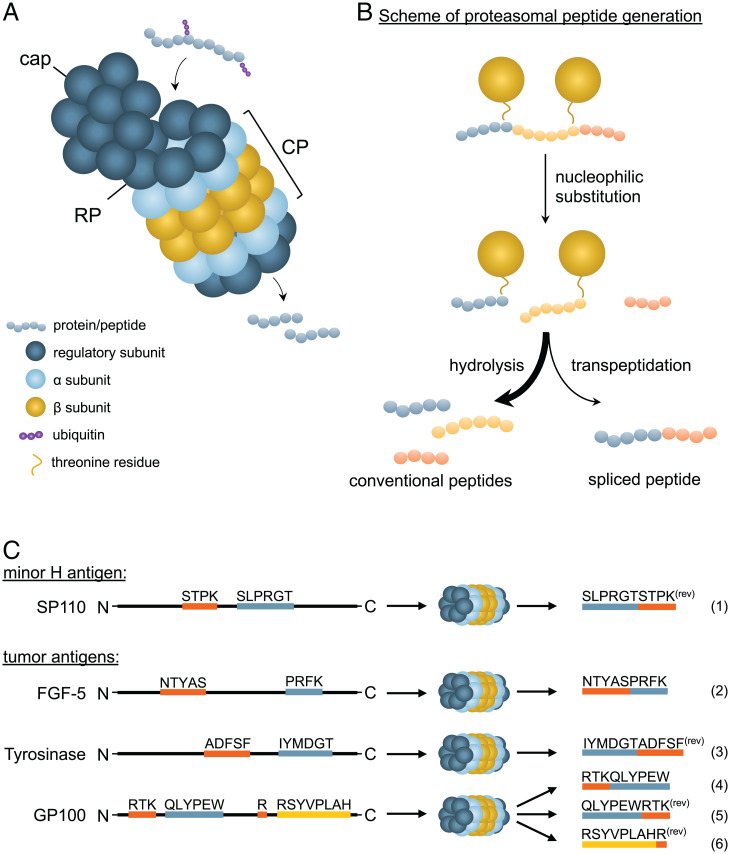Fig. 1.
Proteasomal activity generates both regular and spliced (antigenic) peptides. (A) The proteasome consists of one or two RPs, a cap and two rings consisting of seven α/β subunits each that form the CP. Ubiquitinated proteins or polypeptides are captured by the RP and processed by the CP into peptides. (B) Proteins are cleaved by means of nucleophilic substitution; reactive threonines attack the carbonyl carbon of scissile amino acid bonds, resulting in separate peptides bound to the β subunits. Conventional peptides are formed through hydrolysis, while spliced peptides are generated by transpeptidation of a donor peptide. (C) Six tumor-expressed cis-spliced antigens have been identified thus far, of which four are ligated in reverse order (rev). The antigen derived from SP110 is a minor H antigen, whereas the other five are tumor-associated antigens. Three of the latter group are derived from GP100.

